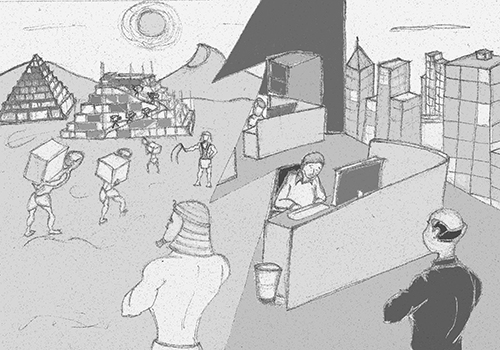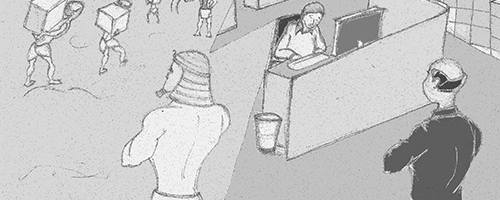Spring term is around the corner, and following it comes graduation for many students. It’s an exciting time of possibility and hope, but it’s also cause for concern for many graduates who have to face the looming reality of the American job market
More work for less pay!

Spring term is around the corner, and following it comes graduation for many students. It’s an exciting time of possibility and hope, but it’s also cause for concern for many graduates who have to face the looming reality of the American job market.
The nation seems to be getting back on its feet with a gross domestic product that has sluggishly surpassed where it was before the recession hit in 2008. Unfortunately, we aren’t seeing the same growth in jobs.
In 2011, we were producing roughly the same amount of goods and services that we did in 2007, but with about 7 million fewer workers. Despite the GDP recovery, lower-income American wages are stagnating.
Many jobs being created are part-time positions, which aren’t accounted for in unemployment figures. According to the Bureau of Labor Statistics, there are still nearly 8 million workers that work part-time for “economic reasons,” compared to about half of that in 2007 when it was at 4.5 million. These are the Americans who want to work more but can’t in the economic environment that Portland State students have to look forward to.
Technological advances are also complicating matters. While technology has played a major role in raising productivity by 23 percent since 2000, it’s also slashing positions. Higher profits often don’t get shared with the employees who remain, and real hourly wages haven’t kept up with productivity.
So where is all the money going? Well, without trying to sound like a broken record, it’s going to the top 1 percent. We’re all getting sick of hearing about it, but the reality is that only a tiny fraction of our population reaps the biggest rewards of the work being done, and that trend isn’t going away. In 2010, 12.9 percent of wages went straight to the top cats, compared to only 7.9 percent in 1979.
This may not seem like such a big or scary number, but the disparity between average workers and the already wealthy is growing at an alarming rate. In 1980, the average CEO made about 42 times as much money as the average worker; in 2010, CEOs made 343 times as much as the average worker. Unless a new era of superhuman CEOs were born, there’s not really justification for their making so much more proportionally than they did 30 years ago.
In addition to stagnant wages, poor hours and watching all the money go into already fat pockets, Americans also get to enjoy the pressure of taking more and more work home with them.
The Pew Internet and American Life Project conducted a study on employed email users and found that 50 percent of users check their email on the weekends, 46 percent check on their sick days and 34 percent check their work email while on vacation.
While this seems harmless enough, it means we’re all helping to perpetuate a system in which our employers dominate our lives without sharing the rewards.
Part-time jobs are also disrupting the home front now that more women who were formerly housewives are joining the workforce. An article in The American Prospect, titled “Overworked and Underemployed,” argued that men may report feeling overworked even while working the same hours if they come home to find chores that they need to help with.
America is in a small group of countries that doesn’t require time off each week, doesn’t require paid annual leave and doesn’t require paid maternity leave. We stress out our employees, don’t compensate them fairly and expect them to constantly be connected to their work life. It’s a dark time for graduates entering the American workforce.




